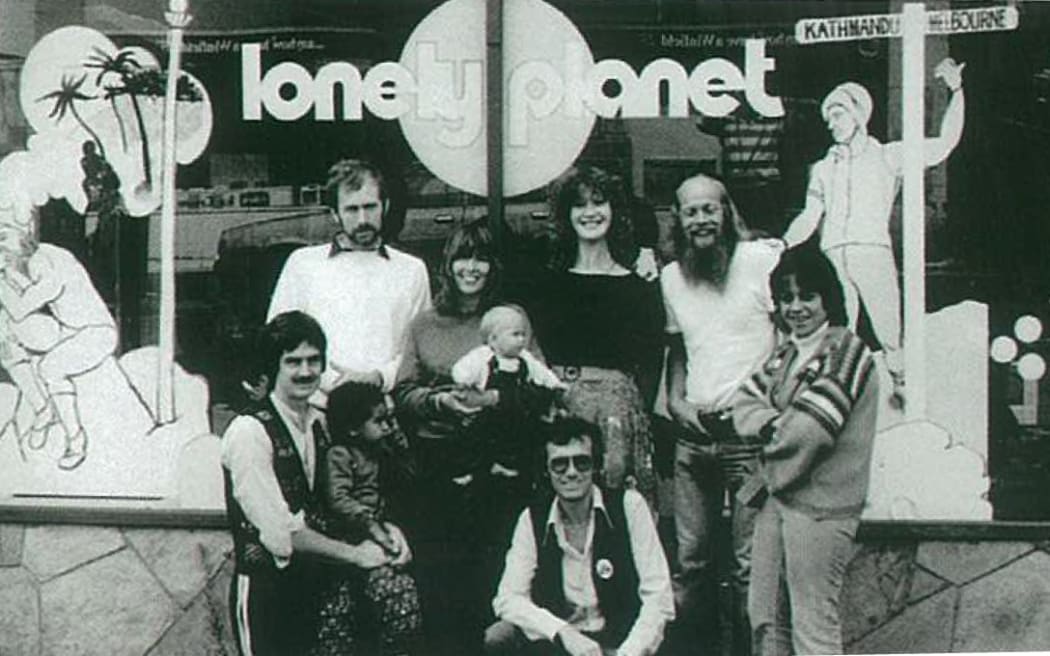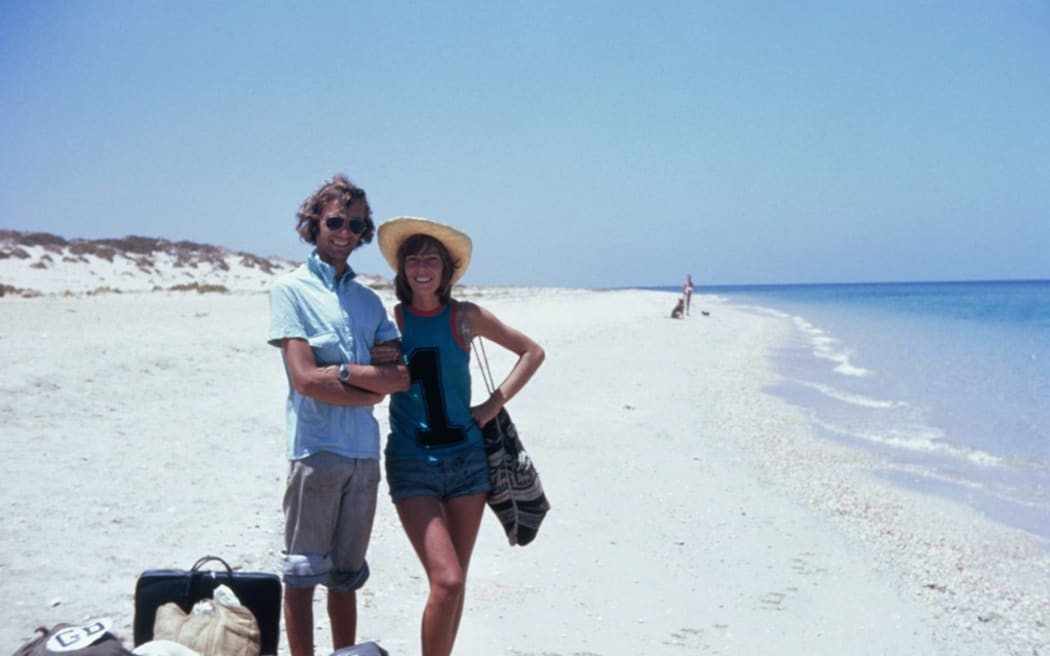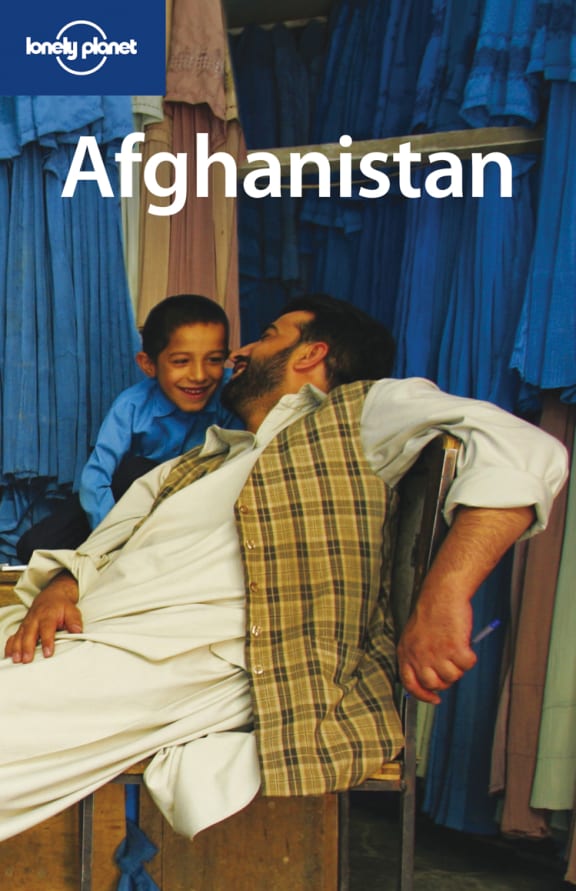You’d think the whole world would have ditched paper by now, but the 50 year old Lonely Planet travel guide is still iconic enough to make a difference.

The Lonely Planet team at the very beginning. Photo: Supplied
When Tony and Margaret Wheeler published their first Lonely Planet 50 years ago they were writing about places other guidebooks didn't go to.
Their early stories of travelling through Afghanistan and hitchhiking along the Khyber Pass inspired a generation of keen young travellers with a thirst for adventure.
Over the next five decades, 150 million Lonely Planets would be printed and translated into 33 languages.
But about 20 years ago the guide – no longer owned by the Wheelers – became less of an overlanders' bible and more of an established publishing business.
"I guess it's been a journey for the book," says NZ Herald travel writer Thomas Bywater. "The way you would pick up a Lonely Planet guide nowadays, it isn't the cover-to-cover Hitchhikers Guide to the Galaxy. It isn't the big fat bible, it's become a reference book."
"That's the way we travel now, you dip in and out of it that same way as a budget airplane ticket."
Lonely Planet has responded to the changes in the way travellers use guides with a full revision of its own book in what it calls one of its most radical redevelopments in its history.
Less about accommodation and other tourism business listings, the new version goes into the planning process and includes more detail on destinations and experiences.
It aims to update 230 guidebooks over two years.
Today The Detail looks at how travel guides have changed over five decades as well as the way people travel.
Despite the increased competition from other guidebooks, and the growth of Instagram and other digital media, Bywater says Lonely Planet has done a good job of staying popular.
"Definitely with a certain generation of traveller who has grown up with the guides," he says.
"I was in the Cook Islands in Aitutaki not that long ago and they've seen a huge influx of visitors recently. They're just got their Hawaiian Airline links, more directly links out from the other side of the Pacific, and the amount of people who I stopped and talked to and said they were in Aitutaki to see Tony Wheeler's favourite lagoon.

Lonely Planet founders Tony and Maureen Wheeler on a beach in Western Australia in 1972. Photo: Supplied
"They'd seen Tahiti and Bora Bora but they wanted to see the Cook Islands because it had been in the Lonely Planet."
Speaking to The Detail from a hotel room in the Pink Flamingo Resort in Port Douglas, Australia, Kiwi Craig McLachlan describes how his job of writing for the guidebook for 25 years has changed.
He went to the Greek Islands six times to write for Lonely Planet publication 'Europe on a Shoestring'. It involved going to 22 islands, "a lot of fun".
With young people tapping into their phones to find and book hotels and restaurants, he writes less about listings and more about experiences. And after 25 years he says he still finds new things to write about.

An old cover of Lonely Planet. Photo: Supplied
Recently, he and his wife, who travels with him, came across a small waterfall in Hokkaido with "thousands and thousands of cherry salmon trying to jump up the falls. It was one of the most incredible sights".
"I wondered whether I should put it in the guidebook, because it mightn't be that great [if] suddenly lots of foreign visitors turn up in rental cars."
McLachlan decided to share his experience in the new Japan edition.
"Japan is that sort of place where you really need a guidebook," he says.
The Detail also talks to Peter Dragecevic as he walks the famous coastal trail along Sydney's Coogee Beach. He's lived there and visited many times but says he still gets a thrill from writing about the city.
Dragecevic says he'd hoped that tourism would change after Covid when much of the world went into lockdown.
"Tourism had really been hammering some of the places I do write about and care about. I really hoped that if anything good was to come from Covid it would be that maybe we wouldn't get cruise ships back but that seems to have automatically changed around and people are very enthusiastic about cruise ships coming into some ports.
"I feel like its going to all explode again," he says.
But he defends the work of guides like Lonely Planet for encouraging the right kind of travel.
"What we speak to is people that want to do independent travel and actually get under the skin of a place and actually understand a little bit about the place. It's not about just ticking off a list of sights like a lot of the Instagram travel tends to be.
"I like to think there's a force for good in travel."
Check out how to listen to and follow The Detail here.
You can also stay up-to-date by liking us on Facebook or following us on Twitter.

Photo:


